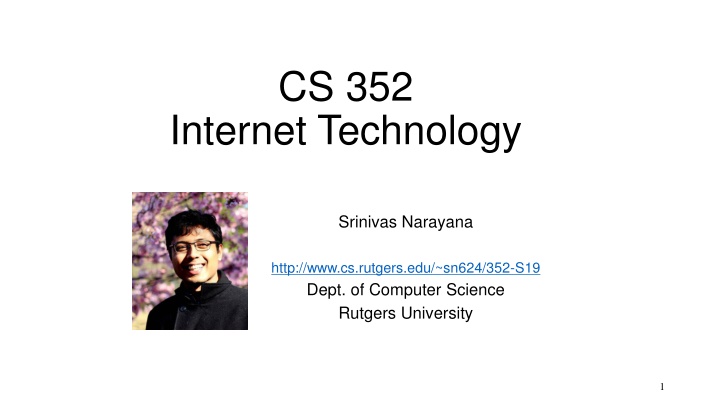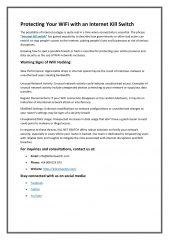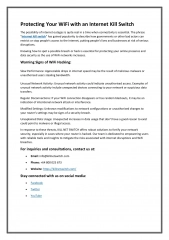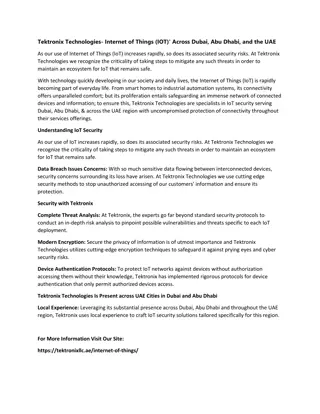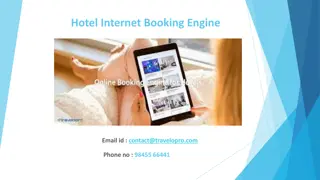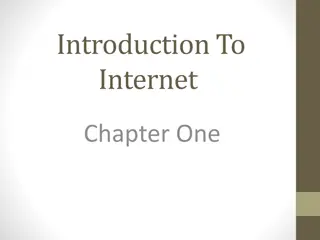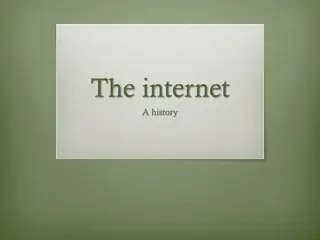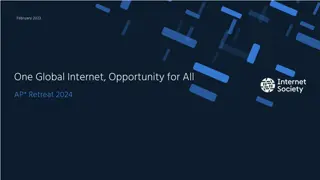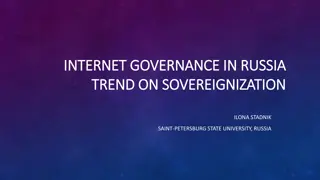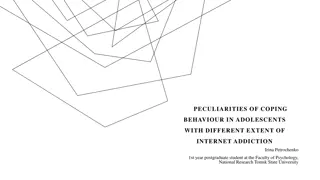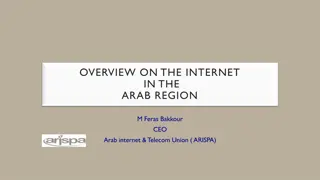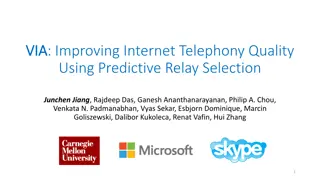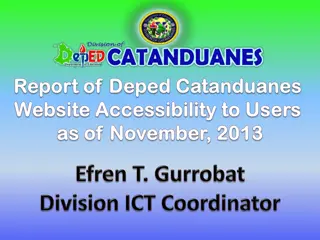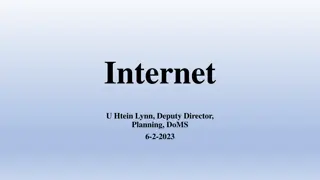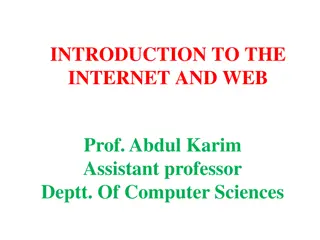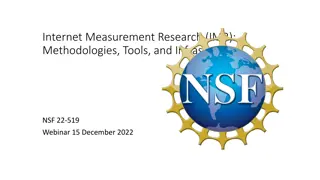CS 352 Internet Technology
In this course on Internet Technology taught by Professor Srinivas Narayana at Rutgers University, students delve into network concepts, from single-link networks to multi-link networks. Explore the fundamentals of communication within networks, the role of routers, and the components that make up a network. Understand network etiquette and the importance of optimal learning practices in class. Gain insights into different network mediums and their functions. Dive into the world of network carriers and learn about managing network connections effectively.
Download Presentation

Please find below an Image/Link to download the presentation.
The content on the website is provided AS IS for your information and personal use only. It may not be sold, licensed, or shared on other websites without obtaining consent from the author.If you encounter any issues during the download, it is possible that the publisher has removed the file from their server.
You are allowed to download the files provided on this website for personal or commercial use, subject to the condition that they are used lawfully. All files are the property of their respective owners.
The content on the website is provided AS IS for your information and personal use only. It may not be sold, licensed, or shared on other websites without obtaining consent from the author.
E N D
Presentation Transcript
CS 352 Internet Technology Srinivas Narayana http://www.cs.rutgers.edu/~sn624/352-S19 Dept. of Computer Science Rutgers University 1
About us: Management Professor: Srinivas Narayana http://www.cs.rutgers.edu/~sn624 srinivas.narayana@rutgers.edu Office hours: CoRE 312, Thursdays 10 am -- noon or by appointment Class: Wed 10.20 11.40 AM and Fri 3.20 4.40 PM TIL 232 Recitation section 5: Bala Murali Komanduri bk455@scarletmail.rutgers.edu Thursday 12.15 1.10 PM LSH-B267 Recitation section 6: Jayant Kannadkar jdk176@scarletmail.rutgers.edu Thursday 8.55 9.50 AM LSH-B115 Course info http://www.cs.rutgers.edu/~sn624/352-S19/ Piazza: accessible from class Sakai site 2
Class etiquette Cell phones in off position No FB status updates, texting, selfies in class If you need to surf while in class (I prefer you do not), do not disturb your neighbors Stop me anytime to ask questions Try to learn as much as you can in class 3
What is a Network? Carrier of information between 2 or more entities Interconnection may be any medium capable of communicating information: copper wire Lasers (optic fibre) Microwave Cable (coax) satellite link Wireless link (cellular, 802.11, bluetooth) Examples: Ethernet, 802.11(WIFI), cable modem, cellular 4
A single link network Send bits of data in packets or frames Need to worry about errors, how to convert bits into signals and vice versa 5
A single link multiple access network Send bits of data in packets or frames Need to worry about errors, how to convert bits into signals and vice versa In addition, how to differentiate among many receivers? Every host as a link layer address: MAC address Packets or frames will have destination address However, can t have every computer in the world on the same link! 6
A multi-link network Router Router Router Connect multiple links via routers Need to figure out how to route packets from one host to another host 7
Components of a network Link Communication links for transmission Host Computer running applications of end user Router Computer for routing packets from input line to another output line Gateway A device directly connected to two or more possibly different networks (serves as an access point), provides access Network A group of hosts, links, routers capable of sending packets among its members 8
Why are networks useful? Availability of resources Resources become available regardless of user location Performance and load sharing Ex: Move work to the least loaded machine High reliability Alternative sources for the same data (multiple copies) Human-to-human communication! Ex: telephone (voice over IP), text messaging
What is Internet Technology? What is an internet? Network of networks What is the Internet? A global internet based on the IP protocol Network to network adopt a common language What does Internet technology refer to? Architecture, protocols, and services 10
Internet growth 2018: 3.6B users Mobile Phones: in 1995 80 M, now 5 B 11
Evolution of Internet Applications 2010-now 1992 ftp web 1996 2004 Music itunes Games search 2008 2000 news Blog Search chat Games IM Yahoo! Wikipedia Craiglist Youtube 12
Web evolution Web 1.0 Read-only web Content Users Yahoo, google, daily targum Web 2.0 Read-write web Content Users and Users Content Blog, wikipedia, facebook, twitter, youtube Web 3.0 Contextual web Personalized, location dependent Apps on your phone get organized (ex: weather, maps); Google NOW Web 4.0 Devices will be connected as first class objects: refrigerator, car, fitbit, thermostat, Prediction-Machine learning 13
400 hrs (not to scale) Content is exploding 2018 HD quality video: 2G to 4G / hour 14 Source: Mary Meeker Internet trends Presentation
Transforming the economy Mobile payment Venmo, square, paytm Shared resource platforms Uber, Airbnb, WeWork 16
Just dancing and listening, to video, tweets, selfies, and share 17 Source: Mary Meeker Internet trends Presentation
Scale of Web apps > 1 B iphones 300 M ipads 2.23 B active users 3.5 B searches/day 18
Impact of the Internet on People Access to remote information HW assignments from my server Stock quotes from financial web site News, wikipedia, google Person to person and group communication email, whatsapp, blogs, fb, twitter, instagram, snapchat Interactive entertainment video clips (youtube), movies (netflix), music (itunes, spotify), games Online commerce Amazon, Ebay, hotels 19
Impact of the Internet on Society The good Access to information, services, e-commerce, productivity The bad Gossip, distraction, Internet addiction, chat room The ugly Phishing, fraud, trolling, cyberbullying The Internet is a mirror of society 20
Internet Players Users of applications Everyone (mom and pop, kids) to get something done Network Designers Protocol design and implementation Performance, cost, scale Internet Service Providers Administrators and ISPs (AT&T) Management, revenue, deployment Market/businesses on the Internet Consumer to consumer (ebay), Business to consumer (amazon, netflix), Business to business (alibaba, importers.com,21food.com), Consumer to business (hotjobs, monster), Govt to C, Govt to B, etc. 21
Internet service providers (ISPs) Local ISPs: Tier 3 (cablevision) Regional ISPs: Tier2 (internap) Global ISPs: Tier 1 (Verizon, Sprint, AT&T, level 3, century link, Deutsche Telekom, NTT) provide access to the entire internet; connect ISP to other ISPs Peering ISPs Have a mutual relationship about forwarding traffic of each others customers (no $ involved) Transit ISPs Provides access to all reachable customers ($$ involved) 22
Core Networks: ISP Tiers local ISP local ISP Tier 3 ISP local ISP local ISP Local and tier- 3 ISPs are customers of higher tier ISPs connecting them to rest of Internet Tier-2 ISP Tier-2 ISP Tier 1 ISP NAP Tier 1 ISP Tier 1 ISP Tier-2 ISP local ISP Tier-2 ISP Tier-2 ISP local ISP local ISP local ISP 23
ISPs connected via Exchanges Flatter Internet Business models among, content provider, transit providers, and customers Net Neutrality 24 Internet Inter-domain traffic By Labovitz et.al, SIGCOMM 2010
Types of Networks in an Internet Local area networks (LAN) Privately owned, within building High speed, broadcast, Ethernet 2 to 100 Mbps Wide area networks (WAN) Spans a large area Point-to-point, high speed fiber lines Long delays but very high speed links Several Gbps 25
Types of Networks (contd) Wireless networks Hosts connected by radio or infrared links Local area and wide area Satellite networks 26
Google WAN 27
Historical perspective Late 1960 s: ARPAnet (4 nodes) Early 1970 s: Aloha net, ethernet, multiple access problem Mid-to-late 1970 s: TCP/IP, 4.2BSD 1980 s to early 1990 s: early internet growth, e-mail & file transfer dominant, NSFNET Mid 1990s: NSFnet handed over to commercial service providers, WWW explodes Late 90s, business models using the internet; dot-com boom and bust Early to mid 2000s, Web 2.0, Facebook, google, Wikipedia Future: Embedded networks , 5 to 10 billion devices waiting to be networked, media convergence, ubiquitous RFID tags 29
Course Goals Understand the basic design principles of computer networks Understand how the Internet works Services, protocols, and architectures Text: Computer networking, a top-down approach, by James Kurose and Keith Ross 30
Course Assessments Sakai quizzes (15%) 6 of them, can drop lowest grade 2 Mid-terms (15% each) No electronic devices, notes, or cheat sheets allowed Final (25%) You must notify me at least 2 weeks before the final if you need to take the makeup! Project (30%) Part 1 (10%) Part 2 (10%) Part 3 (10%) You may not dispute a grade before 24 hours or after 7 days of receiving it 31
Programming assignments Single long project Broken into three parts Can work in a group of 2 Both program and write-up required Background needed to get started: C or Python (211, 214 level) Comfortable using data structures (dictionaries, vectors, trees) Unix (login, permissions, gcc) 32
Programming assignments Each phase of the code feeds into the next phase Make improvements for next phase of the assignment Hand-in via sakai Failure to meet the deadline will result in a zero for all team members. No exceptions. You must turn in all projects to pass this course 33
Academic integrity No cheating on projects and exams Run code similarity detectors on the projects & code review Scrutinize exams for copying Department academic integrity policy https://www.cs.rutgers.edu/academic-integrity/introduction Please read and acknowledge your awareness of this policy 34
